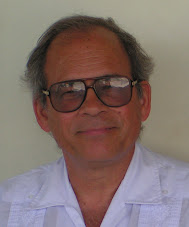Water Corporation of 
We have no regulations controlling the disposal of waste in
Much of our solid waste contains poisons that will eventually do us damage. Particularly vulnerable are foetuses and growing children. As this waste rusts and breaks down, the heavy metals in it leach into the ground and filter down to the water table. There, it accumulates until we suck it up in a well and sell it to the people.
The danger of drinking Anguilla's ground water was one of the main reasons we were told why the reverse osmosis plant at Crocus Bay was obliged to bring sea water from far out to sea. They treat sea water and used it to supply the island with safe, drinkable water. They are not allowed to treat the ground water, though this would be much cheaper than sea water.
The main pollutants that we should be concerned about are the heavy metals. Excessive levels of aluminium, arsenic, beryllium, cadmium, chromium, copper, iron, magnesium, nickel, phosphorous, thallium, and zinc, in our water supply, will eventually poison us. There are 23 heavy metals in all. These metals leach into the water from ordinary household waste that we dump.
Reverse osmosis does not remove these poisons from the ground water. Highly specialised machinery is required to remove these poisons from our ground water. We have no plan to purchase and run such equipment.
Reverse osmosis is a process that removes sodium chloride from water. That means it filters out the salt. It does not “clean up” anything else that may be in the ground water. Adding chlorine to water does not assist, except to kill the e-coli bacteria that seep into the water table from our septic tanks.
If you want to learn more for yourself about this problem, Google “heavy metal poisoning” or “cleaning heavy metals”.
Why in the world would we want to go back to trying to “treat”
Any new reverse osmosis plant in


If we're all going to be sick from the water we'll need plenty of insurance. What happened to the National Health Fund? How come they hired this great guy who had all the answers and then fired him after a year?
ReplyDeleteElectrocoagulation, maybe?
ReplyDeletehttp://en.wikipedia.org/wiki/Electrocoagulation
BTW, the old-fashioned slow-sand filters that clean London's drinking water out of the, heh, Thames, do a great job of taking the heavy metals out, and they've been operating pretty much as long as London's had a sewer system.
Kinda retro though, pumping "clean" reverse-osmosis (new hotness) water into a slow-sand filter (old, not-so-busted-joint) to, heh, get the lead out. BTW, sure you're not hyperventilating bit about the current heavy-metal content of Anquillian groundwater? Has anyone actually tested it? How much would it cost in, heh, free cars? :-)
Slow sand filters http://en.wikipedia.org/wiki/Slow_sand_filter, and their modern cousins "Bio-Sand" filters http://www.biosandfilter.org/, are quite cool. You should check them out. Very simple to build and maintain. All you need is, um, sand. :-).
The original models take a lot of room, though. To clean a swimming pool full of water every day you'd need about a swimming pool size slow-sand filter. Easier to have a "fast" sand filter, a pump, and chlorination, certainly much smaller. BioSand filters are supposed be more efficient, I think. They build little ones for houses about half the size of a dishwasher and can clean 5 gallons of water as a time. Made concrete, just put some pipe into a mold, pour in the concrete, wait until it cures, and, presto, a household water filter for people who don't have running water.
Finally, hard as it may be believe, cistern water, done right, is *very* clean. Don't need fish even. The schmutz in the bottom of a perpetually dark cistern is anaerobic and actually kills bacteria, and, if you take the water from a foot below the surface (a float on the input tube), you pretty much zero suspended solids.
I enjoy reading you website and do agree with what you say. I thought you may be interested in the following web site. Cape Cod had/has many of the same growth problems that Anguilla is facing. The Cape Cod Commission was formed and is one of the best planning commissions in the US. The are very up to date on water/waste/building/maps. If you are interested in any of the things they do, they or I would get you more information.
ReplyDeleteCape Cod Commission
In any case, a solution has to be found in order to supply the entire island with water - preferably non-toxic water, that is. Currently the apartment building I live in in the East gets no water about one or two days a week on average, and literally only a drip on good days. Not much fun for us tenants who have no access to cistern water.
ReplyDeleteWhy on earth doesn't government plan to make sure that such essential infrastructure is in place, before encouraging landlords to build more apartments and other developments?
If Anguilla wants to continue to compare favourably with many of the underdeveloped countries in the region, providing a safe and reliable water supply would not be a bad start.